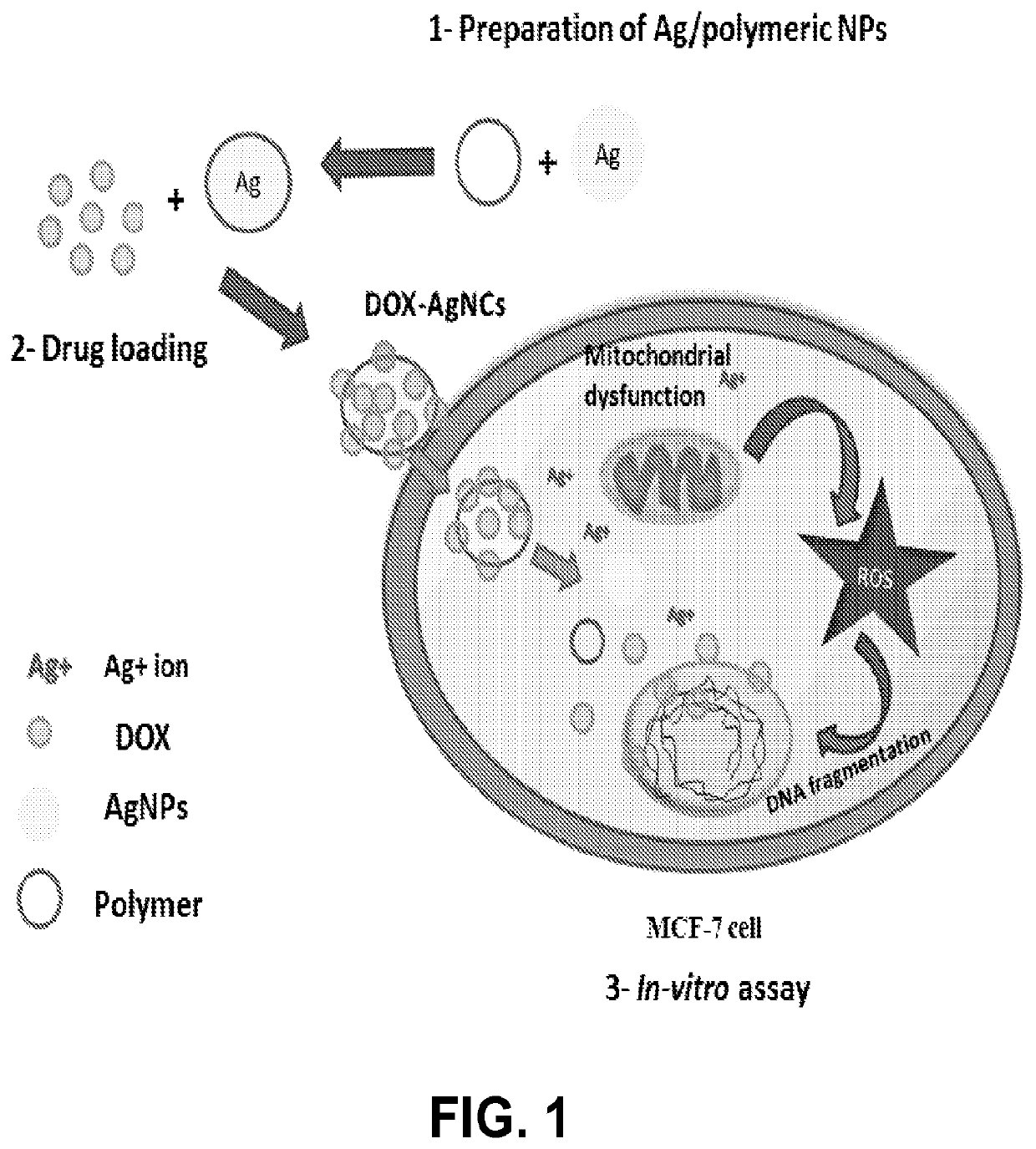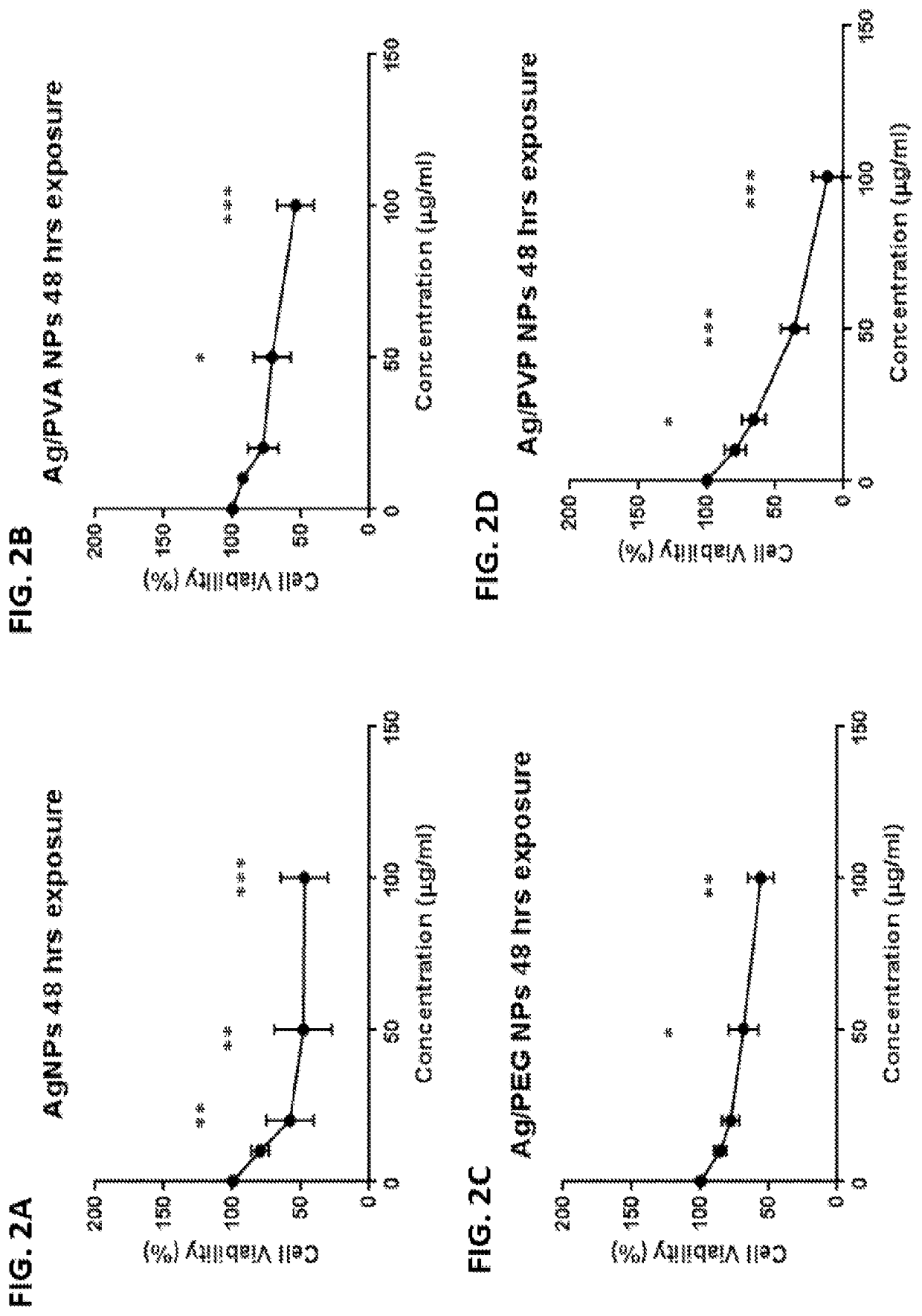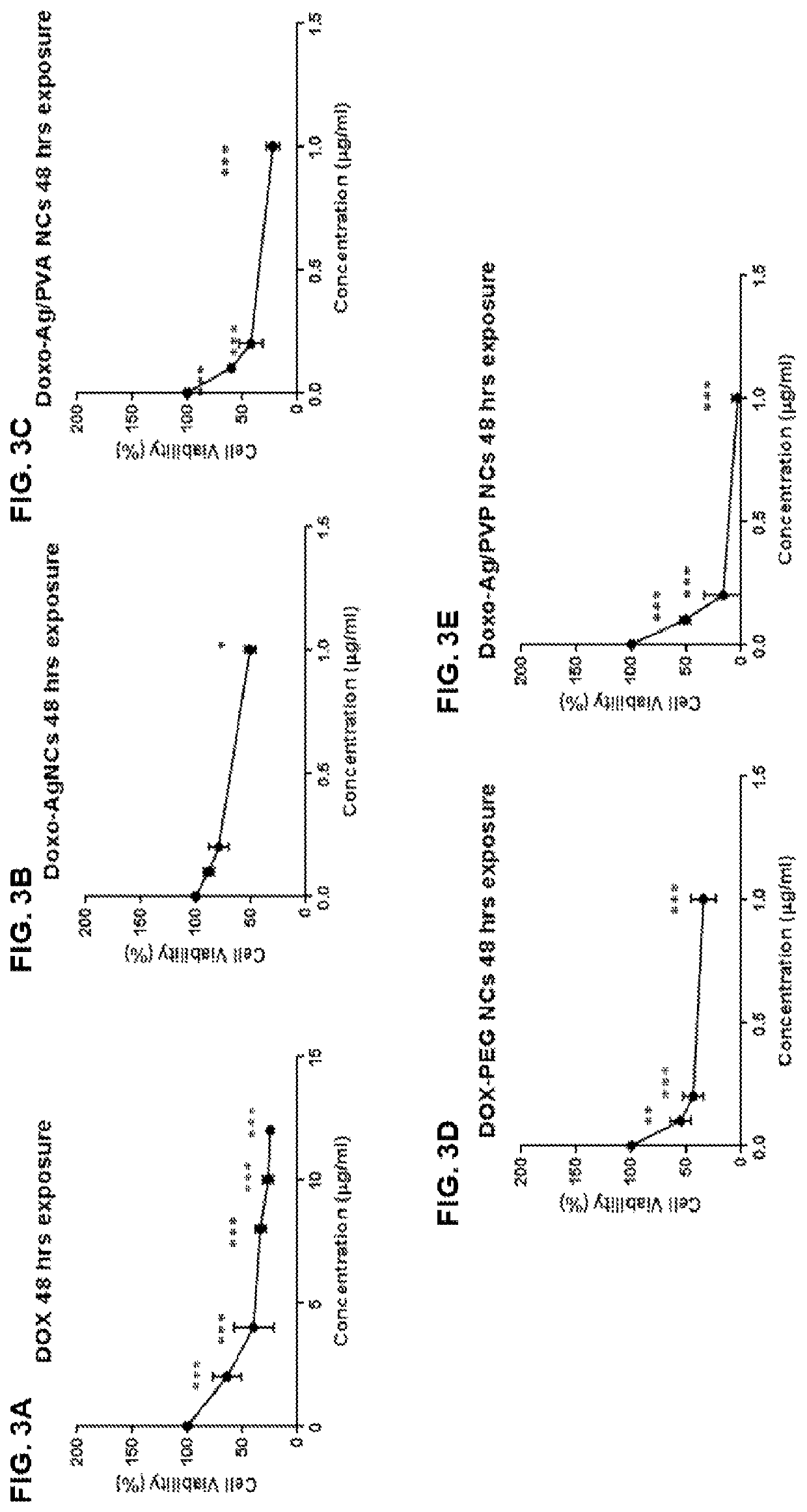Nanoparticle-based combinatorial therapy
a combinatorial therapy and nanoparticle technology, applied in the field of cancer treatments, can solve the problems of severe adverse side effects, bone marrow depression, and the death of both cancer cells and normal cells, and achieve the effects of increasing the cytotoxic effect of mcf-7, prolonging the half-life of circulation, and increasing stability
- Summary
- Abstract
- Description
- Claims
- Application Information
AI Technical Summary
Benefits of technology
Problems solved by technology
Method used
Image
Examples
Embodiment Construction
[0037]The present invention entails the development of (NPs)-based combinatorial therapy composed of DOX-loaded on core-shell silver / polymeric (PVA, PEG, and PVP) NPs. This NPs-based combinatorial therapy is based on combining core-shell silver / polymeric (PVA, PEG, and PVP) nanoparticles, that it has an anticancer effect along with DOX aimed at achieving maximum therapeutic efficacy, while minimizing DOX's dose and systemic toxicity. The aim of this invention is to formulate a NPs-based combinatorial therapy that could (1) provide combination therapy possessing synergic anticancer action, (2) provide passive cancer targeting mechanism (which can selectively target and kill cancer cells without harming the neighboring normal cells), (3) improve pharmacokinetics profile of DOX, (4) improve therapeutic efficacy, (5) reduce DOX's dose, and (6) DOX's toxicity.
[0038]Method
[0039]The NPs-based combinatorial therapy according to an embodiment of the present invention (FIG. 1) can be been pre...
PUM
| Property | Measurement | Unit |
|---|---|---|
| concentration | aaaaa | aaaaa |
| width | aaaaa | aaaaa |
| width | aaaaa | aaaaa |
Abstract
Description
Claims
Application Information
 Login to View More
Login to View More - R&D
- Intellectual Property
- Life Sciences
- Materials
- Tech Scout
- Unparalleled Data Quality
- Higher Quality Content
- 60% Fewer Hallucinations
Browse by: Latest US Patents, China's latest patents, Technical Efficacy Thesaurus, Application Domain, Technology Topic, Popular Technical Reports.
© 2025 PatSnap. All rights reserved.Legal|Privacy policy|Modern Slavery Act Transparency Statement|Sitemap|About US| Contact US: help@patsnap.com



